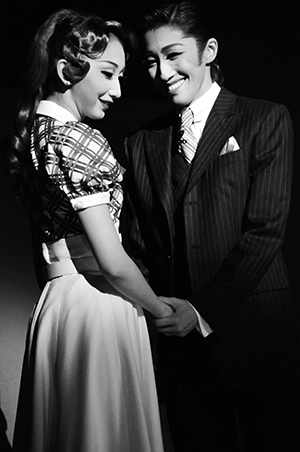 To attempt to apply one adjective to Takarazuka would be nigh on impossible; to expect an individual who has never seen this form of Japanese theatre live to fully comprehend the power, beauty and overwhelming sense of passion on show is extremely difficult.
To attempt to apply one adjective to Takarazuka would be nigh on impossible; to expect an individual who has never seen this form of Japanese theatre live to fully comprehend the power, beauty and overwhelming sense of passion on show is extremely difficult.
Takarazuka first came into being in 1913 in a small town of the same name to the west of Osaka in Japan’s Kansai area. Started by Ichizo Kobayashi, founder of the Hankyu Railway system, what started out as a group of sixteen young women employed to entertain guests at a hot spring resort first performed the following year, and has snowballed over the decades into a theatrical form unlike any other the world over. And in the nine decades since first taking to the stage, they have indeed been all over the world.
Still officially based in the same town where they own the main Takarazuka Grand Theatre and put on the first show in 1914, the controlling Hankyu Railways Company also owns the Tokyo Takarazuka Theatre in Hibiya, in the nation’s capital. Neither are ever lacking in audience members, making Takarazuka arguably the most popular form of live entertainment outside the sporting world in modern Japan.
Today, around 900 people work as part of the Takarazuka Revue, including roughly half as actresses in the five main troupes that make up the Takarazuka Revue.
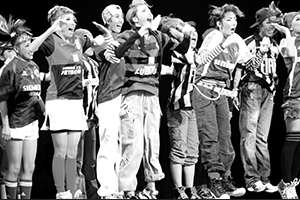 The actresses are all graduates of a special type of training lasting two years at the Takarazuka Music School, where everybody undergoes the same training in singing, dancing and acting. Only upon successful completion of this period of training can those who entered expect to get anywhere near membership in one of the troupes; Flower Troupe, Moon Troupe, Snow Troupe, Star Troupe, and the more recent Cosmos Troupe that came into being at the start of this century. Each troupe is made up of roughly 80-90 members and take turns putting on the backbone of the Takarazuka repertoire – popular and often internationally famous musicals, coupled with revues.
The actresses are all graduates of a special type of training lasting two years at the Takarazuka Music School, where everybody undergoes the same training in singing, dancing and acting. Only upon successful completion of this period of training can those who entered expect to get anywhere near membership in one of the troupes; Flower Troupe, Moon Troupe, Snow Troupe, Star Troupe, and the more recent Cosmos Troupe that came into being at the start of this century. Each troupe is made up of roughly 80-90 members and take turns putting on the backbone of the Takarazuka repertoire – popular and often internationally famous musicals, coupled with revues.
Whereas the first few years saw the Revue put on just three or four shows a year (the first ever being a two month long showing of ‘Donburako’ in the Paradise Theatre), today’s troupes have a far more demanding schedule. At present the Revue manages to perform ten times a year in Tokyo (averaging four to five weeks in duration) and another ten times annually in Takarazuka; an increase from the eight performances just two years ago.
At the time of writing (Nov. 09), the Tokyo Takarazuka Theatre – a stone’s throw from the Imperial Palace and just around the corner from the Nissay Theatre – is playing host to a performance of Andre’s Story. This is a spin off from the iconic France-based Rose of Versailles, with a rendition of Casablanca set to follow in the New Year. Those fortunate enough to attend any of the performances will find themselves carried away on a wave of historical intrigue and emotion as the young hero leaves his love and heads off to war.
 Tickets for Takarazuka are generally not easy to come by, but a little effort in terms of research, (look out for the dates that tickets go on sale and the different types1 available) should see persistence pay off somewhere down the line.
Tickets for Takarazuka are generally not easy to come by, but a little effort in terms of research, (look out for the dates that tickets go on sale and the different types1 available) should see persistence pay off somewhere down the line.
For tourists or short-term visitors to Tokyo, ask your hotel receptionist for advice on ticket purchasing, but to resident and visitors alike, Japanese and non-Japanese, irrespective of background, and perceived comprehension of Takarazuka prior to attendance, please do not live your life, or leave Japan without seeing this truly wonderful, passionate and wholly unique form of theatre.
Reap what you sow. The efforts made in obtaining tickets and attending a Takarazuka performance will be paid back a hundred-fold with memories that will last a lifetime.
http://kageki.hankyu.co.jp/english/
1 Tickets range in price from ¥11,000 per person for the very best seats down to as little as a couple of thousand yen for tickets sold on the day – and even standing tickets (rear of the second floor) can be secured for ¥1,500.
Story by Mark Buckton
From J SELECT Magazine, January 2010




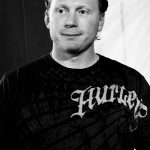
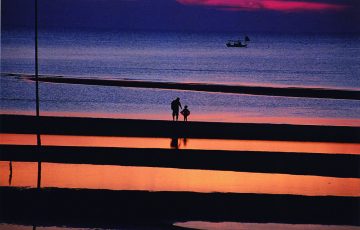
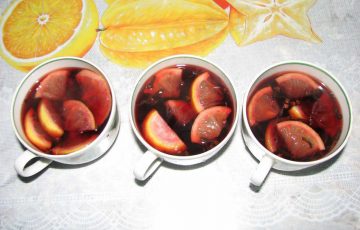
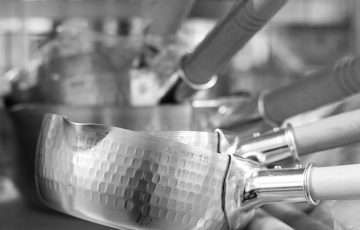
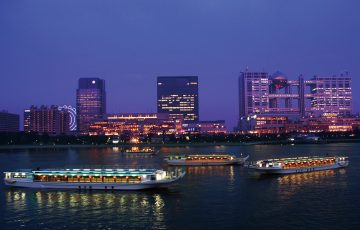
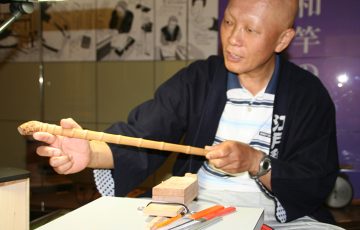
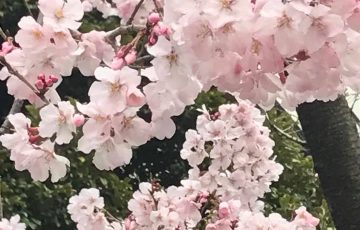




Recent Comments